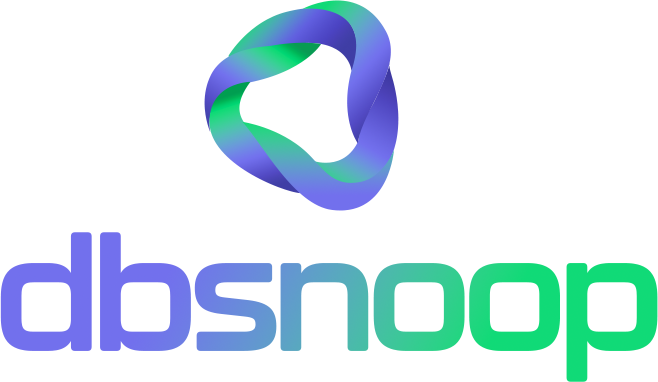

The traditional approach to performance tuning in Oracle, historically focused on ratio metrics like the Buffer Cache Hit Ratio, is a reactive and, in many cases, fundamentally misleading methodology. Chasing a “health” index of 99% leads teams to optimize the symptom (e.g., low cache utilization by adjusting the SGA size) instead of diagnosing the disease (a query performing a massive Full Table Scan that pollutes the cache with irrelevant data).
To solve performance problems effectively and based on evidence, it is imperative to abandon this approach and adopt the time-based tuning methodology, whose pillar is the Oracle Wait Interface. This mechanism, deeply integrated into the Oracle kernel, precisely instruments the time each session spends waiting for resources, providing an exact diagnosis of where the bottlenecks really are. The analysis of these “wait events” transforms optimization from an art based on assumptions into a forensic science, pointing directly to the root cause of the slowness.
This guide technically details the Oracle Wait Interface, how to interpret the most critical wait events, and why this methodology is the gold standard for solving complex performance problems in Oracle environments.
The Flaw of Ratio-Based Tuning
The old tuning method focused on aggregated instance metrics. The premise was that if the ratios were high, the database would be healthy. This approach is flawed by design.
Buffer Cache Hit Ratio: The most famous and most misleading metric. It measured the percentage of data blocks found in memory instead of on disk. The problem is that an inefficient operation, like a Full Table Scan of a small but frequently accessed reference table, can keep the cache hit ratio artificially high, while the truly problematic queries that access larger tables suffer from I/O. Conversely, a Full Table Scan of a large table can “flush” the cache, evicting useful data and temporarily lowering the ratio, leading to a wrong diagnosis.
Other Ratios: Metrics like Shared Pool Hit Ratio or Latch Hit Ratio suffer from the same fundamental problem: they describe the state of an internal component but provide no context about the workload that is causing that state. They do not answer the most important question: “Why?”.
The error of this approach is focusing on the symptom. The low cache hit ratio is not the problem; it is the consequence of a query that is forcing excessive reads from the disk. Increasing the cache size (DB_CACHE_SIZE) is just an expensive palliative that does not solve the fundamental inefficiency of the query and can even introduce other problems, such as an increase in the instance’s startup time.
The Time-Based Tuning Methodology: The Wait Events Interface
The time-based tuning methodology is built on a simple, elegant, and powerful equation that describes the response time of any database operation:
Total Response Time = Service Time (CPU) + Wait Time
The Service Time is the productive time the session spends actively working on the CPU, executing the Oracle code to parse, optimize, and execute the statement. The Wait Time is the unproductive time, the bottleneck, where the session is stalled, waiting for a resource to be able to continue its work. These resources can be a data block from the disk, a lock held by another session, a memory latch, or even a message from the client application.
To make an operation faster, the goal is to identify and reduce the Wait Time.
The Oracle Wait Interface is the instrumentation mechanism of the Oracle kernel that tracks and exposes this Wait Time. For each wait, Oracle records the type of event (e.g., db file sequential read), its duration, and up to three additional parameters (P1, P2, P3) that provide context about the specific resource that was being waited for (e.g., the file number, the block number). By aggregating this data, we can build an exact profile of where the system’s time is being consumed. The fundamental question of optimization changes from “is my cache hit ratio good?” to “what is my system’s main wait event, and which SQL statement is causing it?”.

Analysis of the Main Wait Events by Category
There are hundreds of wait events, but most performance problems manifest in a small subset of them. An effective SRE or DBA must be fluent in their interpretation.
Read I/O (Disk Bottleneck)
- db file sequential read: Represents the reading of a single data block from the disk. It typically occurs during an index lookup operation (INDEX UNIQUE SCAN, INDEX RANGE SCAN) that needs to read the corresponding table block to fetch columns that are not in the index. An excessive number of these waits for a single query indicates that it is processing many rows via the index. The causes can be a poorly selective index (that returns many rows), an inefficient Nested Loop Join where the inner table is accessed via the index repeatedly, or the absence of a “covering index” that would avoid the table access.
- db file scattered read: Represents the reading of multiple contiguous data blocks from the disk in a single I/O operation. It is the classic sign of a Full Table Scan or a Fast Full Index Scan. Oracle is reading large portions of a segment non-selectively. If this is your system’s main wait event, your heaviest queries are not using the appropriate indexes, or the optimizer is choosing a bad execution plan due to stale statistics.
Concurrency Contention (Application or Design Bottleneck)
- enq: TX – row lock contention: The most common application blocking wait event. The TX refers to a transaction lock (mode 6 – exclusive). It occurs when a session tries to modify a row that is already locked by another active transaction. It is a direct sign of a concurrency conflict in your application. Common causes include long-running transactions that hold locks for a long time, UPDATEs that affect many rows, contention on “hot spots” (a single row that is updated by many processes, like a counter), or the use of unindexed foreign keys.
- latch: cache buffers chains: This is a much more serious, low-level wait event. Latches are lightweight serialization mechanisms that protect memory structures in the SGA. Contention on this specific latch usually indicates a “hot block”—one or more data blocks in memory that are being accessed by a massive number of sessions simultaneously. This can be caused by a poorly designed index (e.g., a sequential index on a table with concurrent inserts) or by application logic that causes all threads to compete for the same small set of data.
CPU Consumption (Computational Bottleneck)
- CPU time: When CPU time appears as the main contributor to the response time in tools like ASH/AWR, the bottleneck is not waiting but processing. The query is overloading the processor. Common causes include complex JOINs (especially Hash Joins) between large datasets, massive sort operations that do not fit in memory (PGA_AGGREGATE_TARGET too small), the execution of computationally intensive PL/SQL functions, or excessive SQL parsing (hard parses).
Network and Application (External Bottleneck)
- SQL*Net message from client: This event indicates that the Oracle server process has sent a message to the client application and is idle, waiting for the client to send the next instruction or process the data already sent. Often, it is not a database problem. The most common causes are:
- Slow Application: The application is busy processing a batch of data and has not yet requested the next one.
- “Chatty Application”: The application is fetching data row by row (arraysize = 1) instead of in batches, resulting in thousands of round trips over the network for a single query.
- Network Latency: High latency in the network between the application server and the database server.
Native Tools for Diagnosis: Dynamic Performance Views
A DBA can investigate these events directly in Oracle using the Dynamic Performance Views (V$):
- V$SYSTEM_EVENT: Provides aggregated waits for the entire instance since the last startup. Useful for a macro view.
- V$SESSION_WAIT: Shows what each session is waiting for in real time. Essential for “live” diagnostics.
- V$ACTIVE_SESSION_HISTORY (ASH): The most powerful diagnostic tool (requires the Diagnostic Pack). ASH samples all active sessions every second, recording the SQL_ID, EVENT, P1, P2, P3, etc. This allows for a detailed historical analysis to correlate wait spikes with the responsible queries and users. The ASH data is persisted in the Automatic Workload Repository (AWR) for long-term analysis.
Accelerating Diagnosis with Continuous Observability
Manually querying the V$ views and generating AWR reports are reactive processes that require high specialization and time. An observability platform like dbsnOOp automates and democratizes this analysis.
- Centralized and Continuous Visibility: dbsnOOp continuously collects data from the Wait Interface and ASH, presenting it in a graphical and historical dashboard. An SRE can immediately identify a spike in a specific wait event, like db file scattered read, and see its evolution over time.
- Automatic Correlation with SQL: This is the crucial step that accelerates the MTTR. By selecting the wait spike, dbsnOOOp instantly displays the ranking of the SQL statements that contributed the most to that wait event during that exact period. The connection between the symptom (I/O wait) and the cause (the SQL query) is made automatically, eliminating hours of manual AWR report analysis.
- Root Cause Analysis and Recommendations: With the query identified, the platform allows for the immediate analysis of its execution plan, revealing the Full Table Scan and, often, recommending the exact index needed to solve the problem. dbsnOOp transforms the raw and complex data from the Wait Interface into actionable engineering insights.
Evidence-Based Diagnosis
The Oracle Wait Interface is the pillar of modern performance tuning in Oracle. By shifting the focus from indirect and misleading ratios to the direct measurement of time spent waiting, engineering teams can stop guessing and start diagnosing based on evidence. The analysis of wait events answers the most important question: “Where is the time being spent?”. It points with laser precision to the bottleneck, whether it is on the disk, in application contention, or on the CPU.
Observability tools like dbsnOOp amplify the power of this method, making the analysis fast, accessible, and correlated, allowing for the resolution of complex problems with a speed and precision unattainable by traditional approaches.
Want to understand what your Oracle database is really waiting for? Schedule a meeting with our specialist or watch a live demo!
To schedule a conversation with one of our specialists, visit our website. If you prefer to see the tool in action, watch a free demo. Stay up to date with our tips and news by following our YouTube channel and our LinkedIn page.
Schedule a demo here.
Learn more about dbsnOOp!
Learn about database monitoring with advanced tools here.
Visit our YouTube channel to learn about the platform and watch tutorials.

Recommended Reading
- The report that has already saved millions for companies like yours: This article technically details how workload diagnosis translates into a massive ROI, connecting query optimization to the direct reduction of cloud costs, the decrease in engineering time spent on troubleshooting, and the recovery of revenue lost to latency.
- Why relying only on monitoring is risky without a technical assessment: Explore the critical difference between passive monitoring, which only observes symptoms, and a deep technical assessment, which investigates the root cause of problems. The text addresses the risks of operating with a false sense of security based solely on monitoring dashboards.
- Your database might be sick (and you haven’t even noticed): Discover the signs of chronic and silent problems that don’t trigger obvious alerts but that degrade performance and stability over time. The article focuses on the need for diagnostics that go beyond superficial metrics to find the true health of your data environment.

